This is the last part of the Geisha story, and tells the story of the Ethiopian Gesha.
The overall situation in Ethiopia has been explained in detail in my previous article, which you can check out if you are interested.
It's officially the beginning of Ethiopia's magnificent summer story.
Ethiopia's magnificent summer
There's a village of Cuxia
In the far west of Ethiopia, just a few kilometres from the South Sudanese border, lies the dense and overgrown wild bush of Bench Maji (Bench Maji).
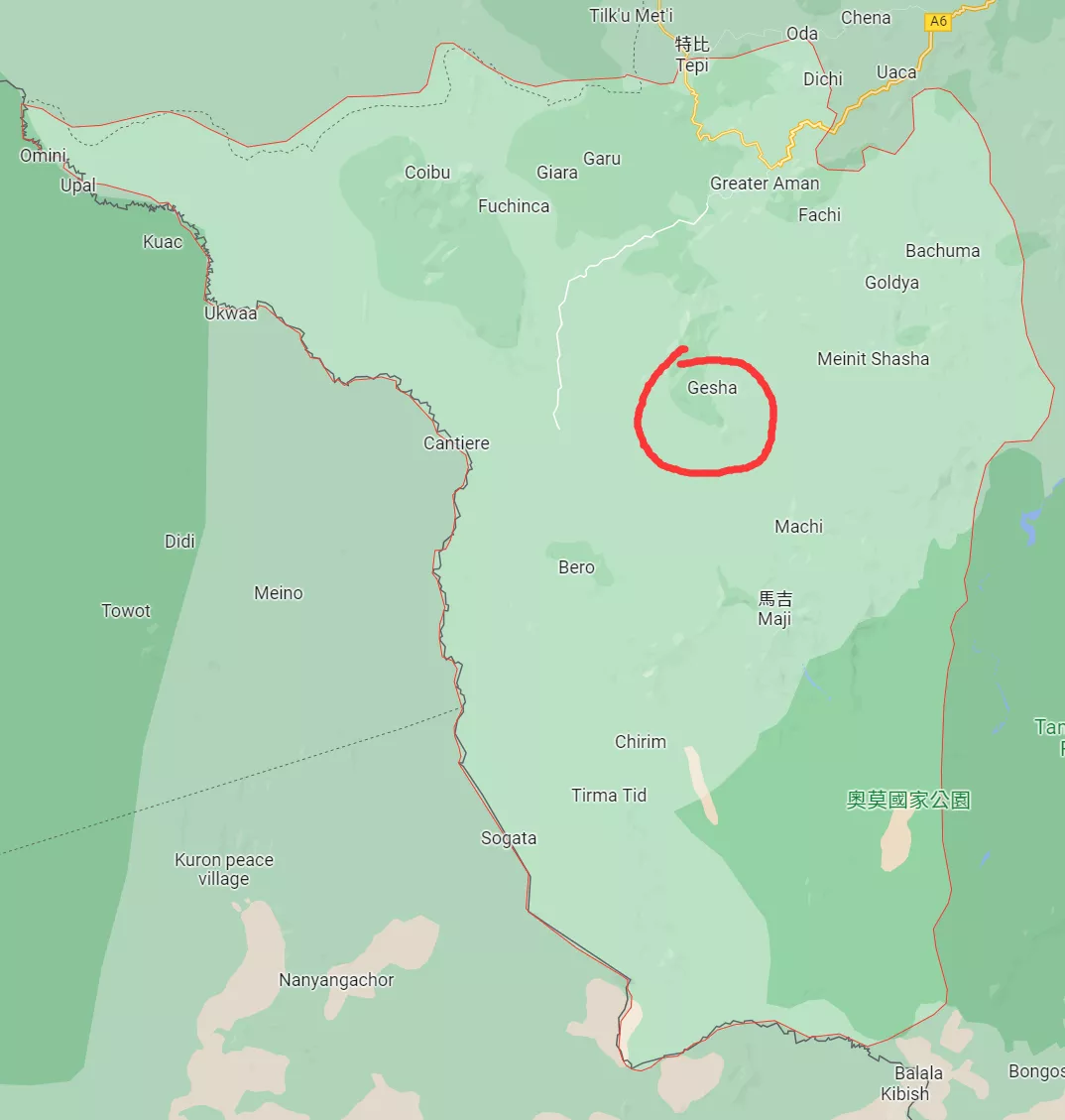
This is a place of breathtaking natural beauty. It is a place where one can enjoy the vast and endless ancient forests from the highlands. This breathtaking landscape is home to Gesha Village Coffee Estate and the 471 hectare coffee farm they have built from scratch over the past six years.
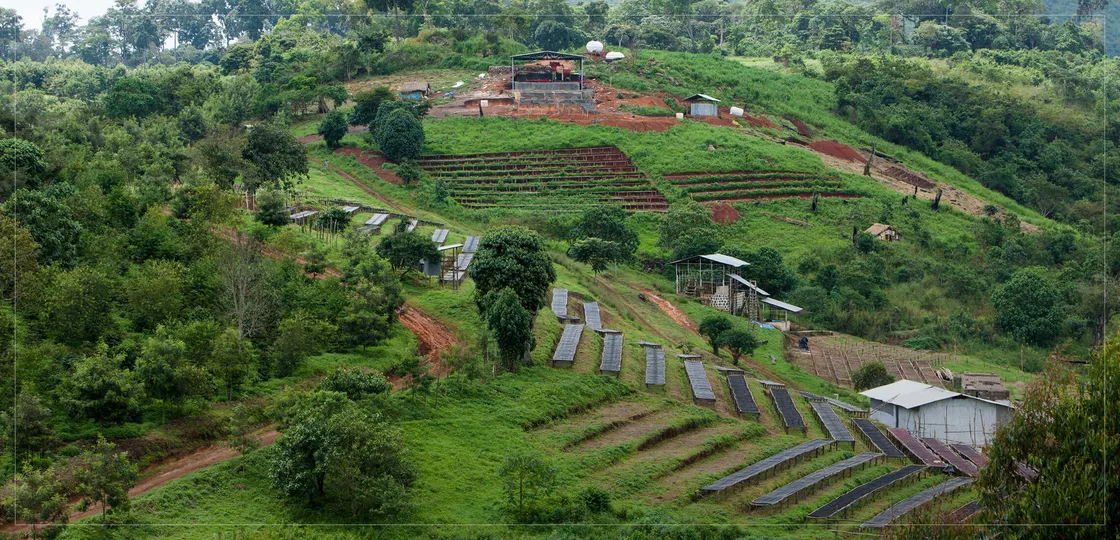
Gesha Village was also established by chance. The current owners are documentary filmmaker Adam Overton and his photographer wife Rachel Samuel. They discovered the Gori Gesha Forest in the Bench Maji region in 2007 while working on a documentary about coffee in Ethiopia for the Ethiopian government. The idea of creating their own coffee estate and brand was born.
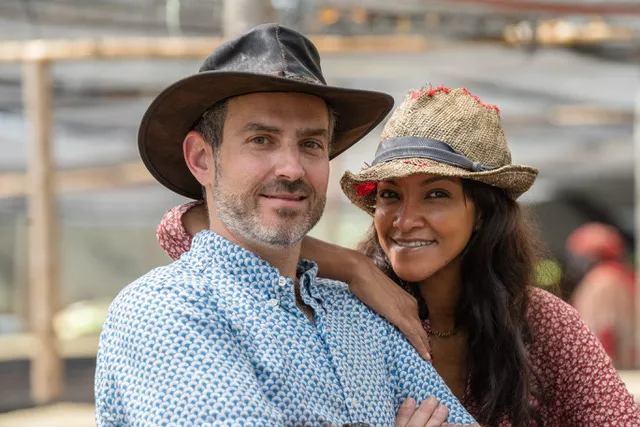
They were fortunate enough to meet Willem Boot, owner of the Mule Estate and BOP judge, in 2009, and Willem Boot's idea provided the Overton's with the opportunity to return to Ethiopia in search of CURLY's birthplace. It was all so natural that they came to the area of Bench Maji known as Gesha Village, the most likely area to find the original gemsha.
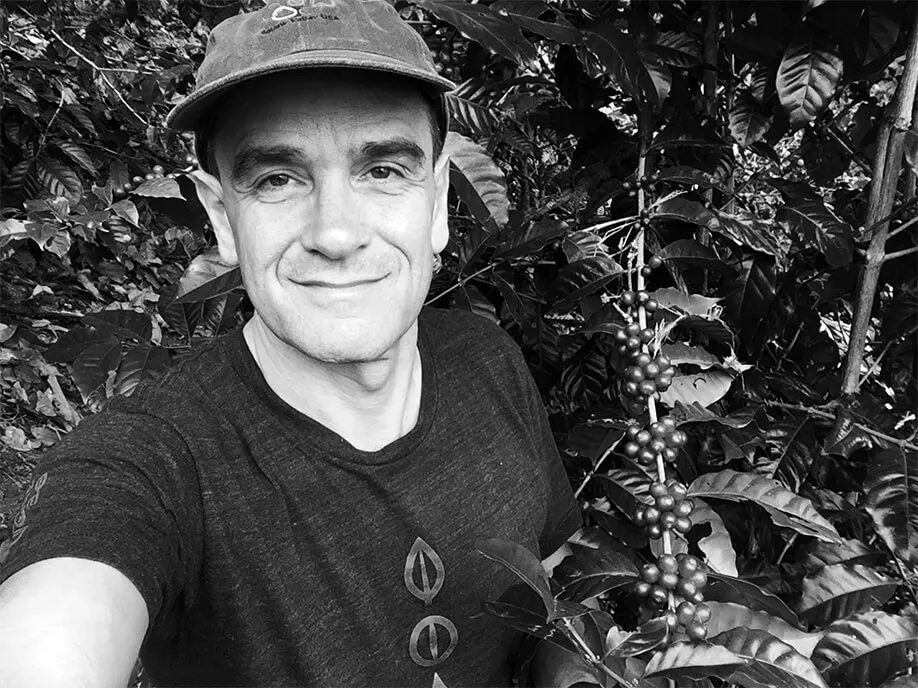
Willem Boot (Willem Boot) immediately after Adam followed Willem Boot through the surrounding forests in search of wild Crested Summer, and after a long time of exploring and selecting the species, they finally made their way to the wild Crested Summer. They later learned that this was the Gori Gesha forest, where the species was first discovered. So they collected seeds from the native Gori Gesha trees, selected them and planted them in the Gori Gesha village. The decision was made to establish the estate here, and it was named Gesha Village.
Tree species in the village of Cushar
Gori Gesha
Gori Gesha is more like a primitive species (Heirloom) in the Cuisinart Forest, this seed was harvested in 2011 from exploration in the Cuisinart Forest. This represents the genetic diversity of the Gori Gesha forest.
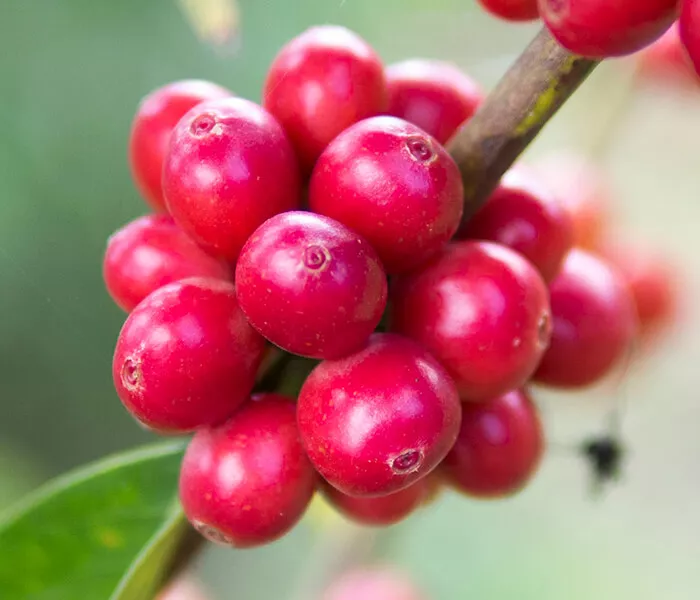
Gesha 1931
Gesha 1931, which was genetically sequenced to be closer to the strain of Cebus found in the Kaffir forest in 1931, i.e., closer in genetics to the Panamanian Cebus.
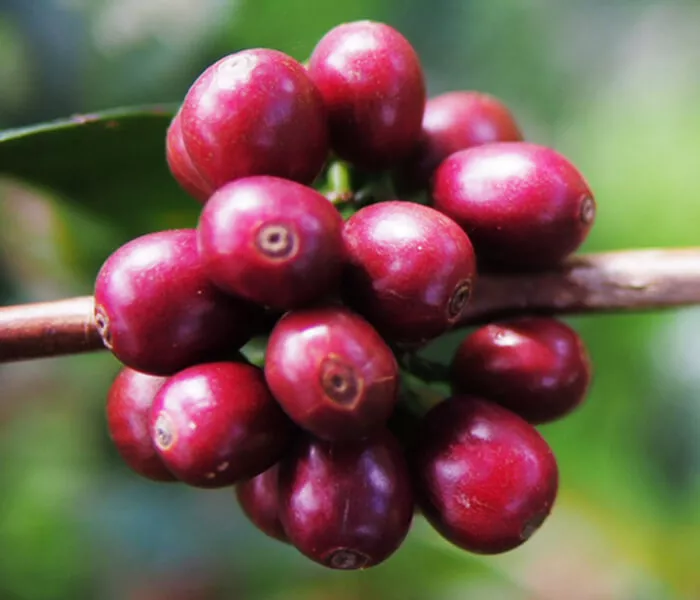
Illubabor
The selection of this disease-resistant variety was found during an expedition to Illubabor Forest in 1974. The village of Cushar is the only place where this variety is currently grown.
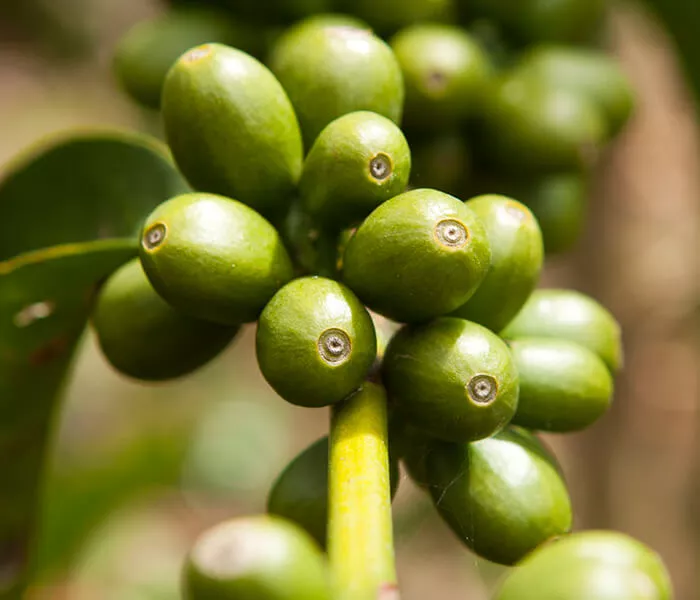
Planting plots
The village of CURLY is currently dividing the entire farm into eight sub-farms, also called blocks. Within these blocks, a total of three tree species are grown and different processing and handling methods are experimented with. The coffee cherries picked from each block are labeled to indicate their origin and tracked through an internal tracking system that takes them from the factory to export.
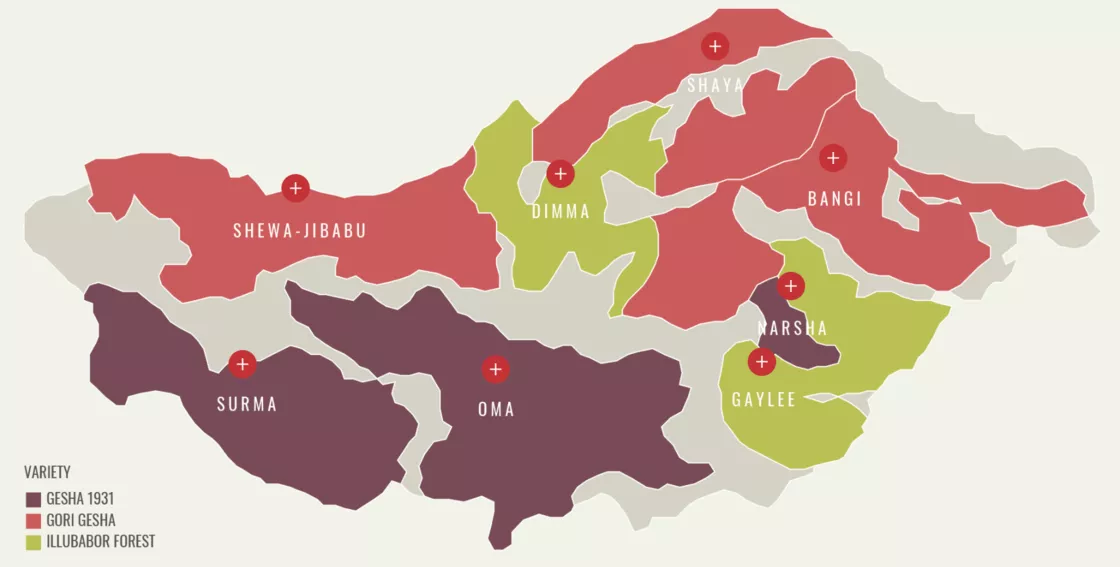
The varieties planted in these plots are shown above, with specific plot information as follows.
plot area (ha) altitude (m) cultivarsBangi541911 - 2001Gori GeshaDimma28.71966 - 2019IllubaborGaylee34.81916 - 1982IllubaborOma67.61931- 2040Gesha 1931Narsha5.31963 - 1977Gesha 1931Surma45.91909 - 2063Gesha 1931Shewa- Jibabu48.51973 - 2069Gori GeshaShaya36.51926 - 2069Gori Gesha The Gori Gesha village farm is at a high altitude of 1909 - 2069 m. The total area of the farm is 471 hectares, 320 hectares of which are planted with coffee; they mix 2000 coffee trees per hectare with 30,000 native shade trees. Different tree species are planted according to the characteristics of each plot to ensure that the advantages of the species are maximized. The unique approach to agroforestry creates a balance between the pristine environment and the commercial management of the farm.
Coffee classification
The village of Cuisinart has also borrowed some of the Panamanian business model, perhaps influenced by Willem Boot. Totally different from the traditional Ethiopian grading system, and different from the Panamanian Emerald Estate grading method. According to current information, there are roughly 5 types.
Bidding lots
The bidding lot is a selection of the top portion of the entire estate, representing the highest level of the estate. Typical cup scores are around 88 - 92. The overall lot represents only about 3% of the estate's production.
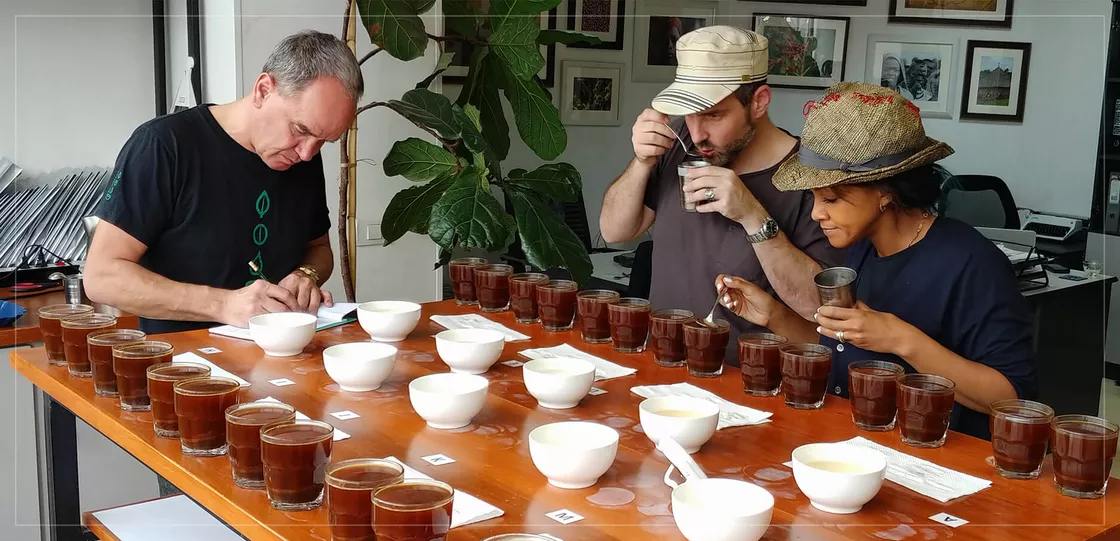
The bidding lots are divided into Champion's Reserve and Farm Reserve).
Gold standard batches (RARITIES)
This lot accounts for 10% of the estate's production and is very rare with complex flavors. This is the highest grade of coffee beans other than the bidding lot, and they are often selected for competition by internationally competing baristas.

For example, at the 2018 WBC Worlds in the Netherlands, the Australian and Japanese champions were the ones who picked the gold standard batches for the event.
Red Label Batch (GROWERS RESERVE)
The Red Label accounts for 15% of the total production and generally scores above 88 on the SCA's cup test scale, with slightly less flavour intensity and complexity than the Gold Label batches, making it a very good value for money single lot.
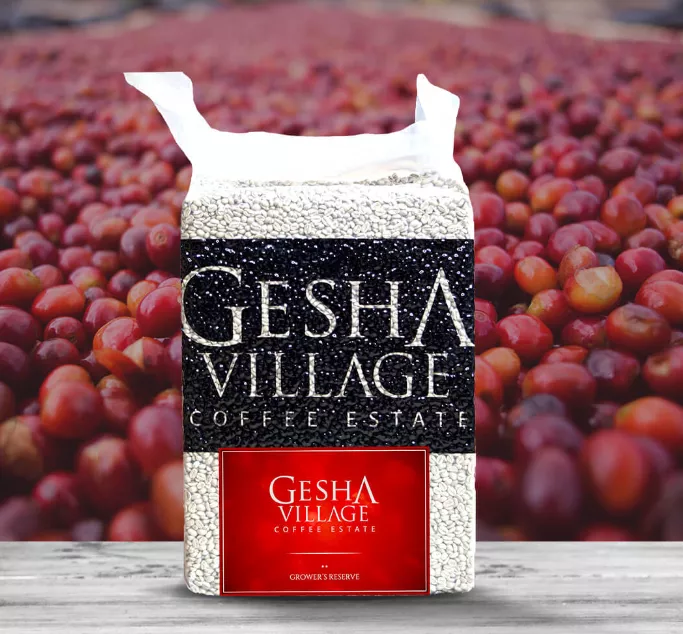
Green Label Batch (SINGLE-TERROIR)
The official name of the Green Label is SINGLE-TERROIR (Single Terroir/Plot), and this coffee bean comes from a single farm in the village of Cuisinart. Full traceability information can be found for each lot in the Single-Terroir range, including the farm name, coffee variety and processing date.

In fact, in this country, the green label is rather rare, but basically there are still more competitive batches, gold labels and red labels.
CHAKA batch (CHAKA)
This is a blended bean from the village of Cuisinart, which includes three varieties, Gori Gesha, Gesha 1931, and Illubabor, and is divided into two blends with sun and wash treatments. This is a quality batch that is available in large and consistent quantities.
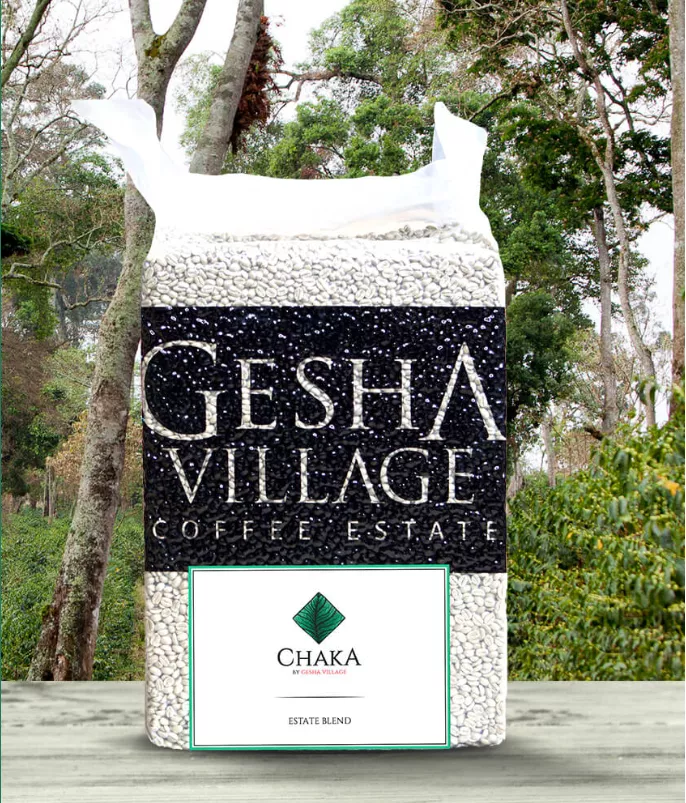
CURLY VILLAGE AUCTION
Since there are bidding lots, of course there is an auction. The bidding at Cuisinart Village, called the 'Pride of Gesha Auction' is organized by itself. It is held every year and just had its sixth (the first one was in 2017) auction on June 28.
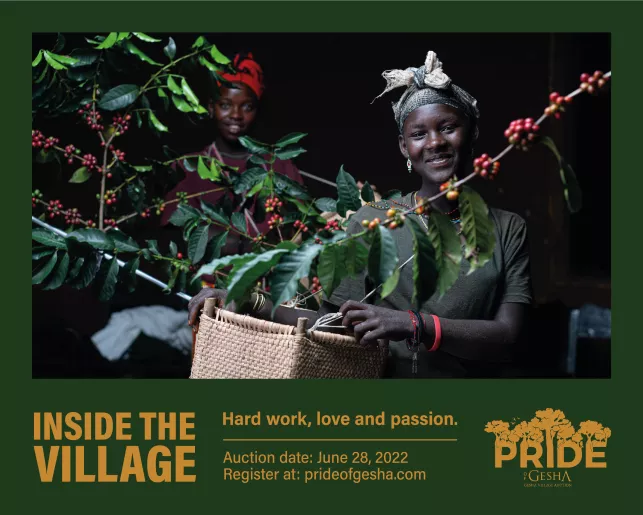
This year a total of 26 beans with 88 points or more were selected for auction from 140 lots, and the final auction results, which were a bit outrageous (too expensive) You can view the results in the following chart or go to the official website at

The High Bidder column, pictured here, is for the company (organization) or individual that ended up bidding, and you can see some familiar raw beaners or national coffee brands. If you want to drink them, you can follow the subsequent movements of these brands and buy them to try.
The treatment method of CURLY SUMMER VILLAGE is generally divided into the three most traditional ways of washing, sun-drying and honey treatment. Of course, there are also special treatments of an experimental nature, but not many are currently listed. I personally still promote the traditional treatment, which is more stable and natural.